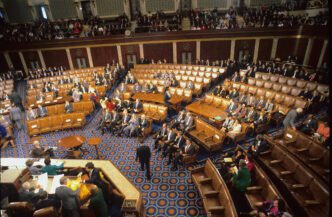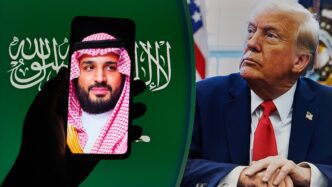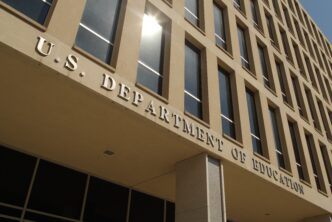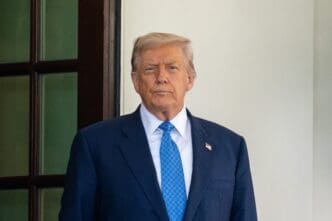Executive Summary
- The high-stakes summit between US President Donald Trump and Russian President Vladimir Putin in Alaska failed to yield a ceasefire or concrete agreements on the Ukraine conflict.
- The meeting served as a significant diplomatic victory for Moscow, marking President Putin’s return to the world stage following international isolation.
- Despite the lack of tangible progress, the summit concluded with President Putin inviting President Trump for a future meeting in Moscow, signaling an ongoing, albeit unproductive, rapprochement.
The Story So Far
- The summit occurred amidst Russia’s ongoing full-scale invasion of Ukraine, with Moscow holding maximalist demands for peace that are unacceptable to Kyiv.
- The meeting marked a significant shift for Russian President Vladimir Putin, who had been largely isolated internationally following Russia’s 2022 invasion of Ukraine.
- President Putin’s exposure to direct and challenging questions from journalists was highly unusual, as he has maintained strict control over media in Russia for 25 years.
Why This Matters
- Russian President Vladimir Putin and Moscow viewed the summit as a significant diplomatic victory, marking a return to the world stage and an opportunity to push their maximalist demands for peace in Ukraine, while also fostering rapprochement with the US.
- US President Donald Trump described the meeting as “extremely productive” and having made “great progress,” despite the lack of concrete agreements on a Ukraine ceasefire, and expressed openness to future high-level engagements with Putin.
- Kyiv’s implied viewpoint is that no substantive peace deal was achieved, as Russia’s “root causes” demands for ending the conflict are considered unacceptable.
Who Thinks What?
- The US-Russia summit, despite failing to yield a ceasefire in Ukraine, significantly elevated President Putin’s international standing by normalizing high-level diplomatic engagement on US soil. This outcome, coupled with a direct invitation for a future meeting in Moscow, signals a potential shift towards continued rapprochement between the two nations. This suggests a willingness for ongoing engagement despite a lack of tangible progress on critical global issues, potentially altering the landscape of international relations.
The high-stakes summit between US President Donald Trump and Russian President Vladimir Putin in Alaska concluded with more questions than answers, failing to yield a ceasefire in the Ukraine conflict despite being billed as a vital step towards peace. The nearly three-hour meeting ended without concrete agreements on the war, but notably included an invitation from Putin for a future meeting in Moscow.
Putin’s Return to the World Stage
President Vladimir Putin received a notable welcome upon his arrival in Alaska, marked by a red carpet and a warm handshake from US President Donald Trump. This reception was particularly significant given Putin’s recent international isolation following Russia’s full-scale invasion of Ukraine in 2022. The meeting itself, on US soil, was viewed as a diplomatic victory for Moscow, with the source noting it likely surpassed the Kremlin’s expectations.
In a seemingly unscripted moment, Putin accepted a ride in Trump’s armored limousine, appearing to laugh as the vehicle pulled away. This gesture further underscored the perceived rapprochement between the two leaders, a stark contrast to Putin’s previous status as a pariah in the West.
Unfamiliar Questions for the Russian Leader
During his time in Alaska, Putin encountered a rare experience: direct and challenging questions from journalists. Moments after landing, a reporter reportedly shouted, “Will you stop killing civilians?” which Putin appeared to shrug off. During a brief photo opportunity, further questions were posed, including one in Russian regarding a potential trilateral summit with Ukrainian President Volodymyr Zelensky. The Russian president offered no direct answers, responding only with a cryptic smirk.
This engagement with an unconstrained press corps is highly unusual for Putin, who has maintained tight control over media within Russia for 25 years, suppressing journalistic freedoms and replacing independent reporting with state propaganda.
Statements Post-Summit: What Was Said and What Was Not
Instead of a full press conference, the two leaders delivered statements and did not take questions from reporters. President Putin spoke first, praising the “constructive atmosphere of mutual respect” and the “neighbourly” talks before delving into a brief history of Alaska as a former Russian territory. He eventually addressed what he termed the “situation in Ukraine,” stating that while an unspecified “agreement” had been reached, peace required the elimination of the “root causes” of the conflict.
According to the source, this phrase typically refers to a set of maximalist demands from Moscow, including recognition of Russian sovereignty over annexed Ukrainian regions, Ukraine’s demilitarization, neutrality, and no foreign military involvement. These conditions are considered unacceptable by Kyiv, indicating that no substantive deal on a ceasefire was achieved.
Notably, when it was President Trump’s turn to speak, he did not explicitly mention Ukraine or the possibility of a ceasefire. He stated that “many, many points” were agreed upon and that “great progress” had been made in an “extremely productive meeting,” but offered no specific details. Trump admitted, “We didn’t get there” on a comprehensive agreement, yet expressed optimism about future progress. Crucially, there was no mention of the “severe consequences” Trump had previously threatened if a ceasefire was not reached.
‘Next Time in Moscow’: An Open Invitation
Despite the lack of tangible progress on peace in Ukraine, the summit appeared to solidify a rapprochement between Russia and the United States. Images of the two presidents shaking hands and smiling circulated widely, alongside photographs of American servicemen preparing the red carpet for Putin’s arrival.
Before concluding his statement, Putin referenced a frequent assertion by Trump: that the conflict in Ukraine would not have started had Trump been in power. Although no substantive outcomes were announced, the leaders left the door open for another meeting. Trump remarked, “I’ll probably see you again very soon.” In a rare public display of speaking English, Putin then looked at Trump and, chuckling, said, “Next time in Moscow.” Trump acknowledged the remark, stating, “I’ll get a little heat on that one, but I – I could see it possibly happening.”
The Alaska summit, while failing to deliver a breakthrough on the Ukraine conflict, underscored a significant shift in diplomatic engagement between the US and Russia, leaving open the possibility of future high-level meetings between the two leaders.








